1
ROLE OF A COUNTRY PRIEST
As an institution, the Church is present and prominent in all aspects of one's life, as well in the social, political, economic spheres as in personal life.
The country priest holds a prominent role in the organization of a village. He is the religious leader of the parish, but as individual lives are closely intertwined with people's faith, his role largely oversteps religious boundaries. Indeed, he becomes entangled in his parishioners' entire lives. He must see to the poor and supervise the education given in the parish. He is considered indispensable and he exerts a very strong influence on the entire parochial community.
In Batiscan, this prestigious role was held by Wenceslas Théophilas Fréchette for over 30 years. He was one of the main residents of the old presbytery.
2
PARISH PRIEST FRÉCHETTE - THE FIRST YEARS
Born on June 6th, 1811, in St. Thomas de Montmagny, son of François Fréchette and Marie-Thècle Morin, Wenceslas Fréchette pursued his education at the Seminary of Québec from 1823 to 1831. He was ordained a priest on October 23rd, 1836.
Starting out as an assistant priest in Cap-Santé, Fréchette held a teacher's position in a Halifax college in the early 1840s. Due to his dedication to his work and to his sense of discipline, he quickly became the director of the establishment. He returned to the Province of Quebec in 1843 and became priest of the St. François-Xavier de Batiscan parish, where he remained until 1875.
3
Father Wenceslas T. Fréchette19th century, between 1843 and 1875
Batiscan (Quebec), Canada
 Credits:
Credits:Archives of the Fondation des Amis du Vieux presbytère de Batiscan
4
THE ROLE OF THE PASTOR
The role of parish priest kept Wenceslas Fréchette busy! As it is the case with all parish priests in the 19th century, Father Fréchette assumed three main responsibilities.
First of all, he had to keep all the parish registries (christenings, weddings, burials), as well as the account books up to date.
5
Parish register19th century, circa 1816
Batiscan (Quebec), Canada
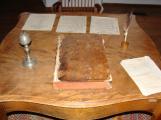 Credits:
Credits:Archives of the Fondation des Amis du Vieux presbytère de Batiscan
6
Parish Council accounts19th century, circa 1857
Batiscan (Quebec), Canada
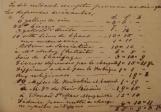 Credits:
Credits:Archives of the Fondation des Amis du Vieux presbytère de Batiscan
7
Secondly, he had to prepare the homilies for the daily masses, as well as conduct the services and different events of the liturgical calendar.
8
Prayer bench18th century, circa 1750
Batiscan (Quebec), Canada
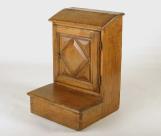 Credits:
Credits:Collection of the Musée de la civilisation
Idra Labrie
9
Finally, he provided a Christian education to his parishioners. Since most of them were illiterate, he frequently opted for the use of images over words to do so.
10
''Death of the righteous''19th century, circa 1800
Batiscan (Quebec), Canada
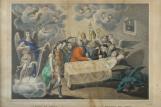 Credits:
Credits:Collection of the Musée de la civilisation
Idra Labrie
11
'The sinner's death''19th century, circa 1800
Batiscan (Quebec), Canada
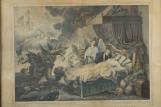 Credits:
Credits:Collection of the Musée de la civilisation
Idra Labrie
12
Anointing of the Sick17 March 2008
Batiscan (Quebec), Canada
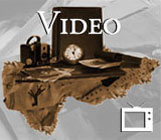 Credits:
Credits:Collaboration of Vox, Cap-de-la-Madeleine
13
Lantern with straps19th century, circa 1800
Batiscan (Quebec), Canada
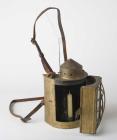 Credits:
Credits:Collection of the Musée de la civilisation
Idra Labrie
14
Lantern with straps19th century, circa 1800
Batiscan (Quebec), Canada
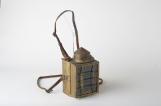 Credits:
Credits:Collection of the Musée de la civilisation
Idra Labrie